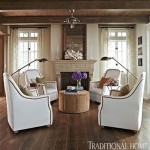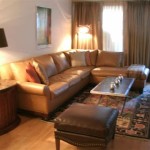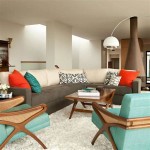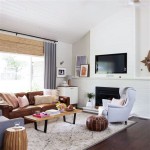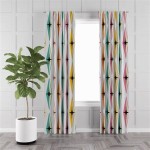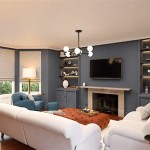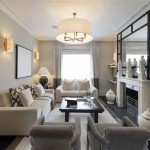Interior Designer For Living Room: Crafting Functional and Aesthetic Spaces
The living room, often considered the heart of a home, serves as a multifaceted space. It functions as a gathering area for families, an entertainment zone for guests, and sometimes, a personal sanctuary for relaxation. The design and functionality of a living room significantly impact the overall atmosphere and usability of a home. An interior designer specializing in living rooms offers expertise in transforming these spaces to meet specific needs and aesthetic preferences.
Engaging an interior designer is an investment in creating a living room that is both visually appealing and optimally functional. These professionals possess a comprehensive understanding of design principles, spatial planning, material selection, and current trends. They can translate a client's vision into a tangible reality, addressing practical challenges and maximizing the potential of the available space.
Understanding Client Needs and Preferences
The initial consultation with an interior designer is crucial for establishing a clear understanding of the client's requirements and aspirations. This involves a thorough discussion of the client's lifestyle, preferred aesthetic styles, budget considerations, and any specific challenges related to the existing space. Understanding the intended use of the living room is paramount. Will it primarily be used for family gatherings, formal entertaining, or casual relaxation? This information will guide the designer's decisions regarding furniture selection, layout, and overall design concept.
Furthermore, the designer will inquire about the client's preferred color palettes, textures, and materials. This information is essential for creating a cohesive and visually appealing design. The designer may present visual references, such as mood boards or sample images, to clarify the client's style preferences. It is crucial for the client to communicate their likes and dislikes openly to ensure that the final design accurately reflects their personality and taste.
Beyond aesthetics, practical considerations must be addressed. This includes assessing the existing space's architectural features, lighting conditions, and any limitations that may impact the design. The designer will also discuss the client's functional requirements, such as storage needs, seating capacity, and technological integration. This comprehensive understanding of the client's needs and preferences forms the foundation for a successful design project.
Developing a Comprehensive Design Plan
Once the initial consultation is complete, the interior designer will develop a comprehensive design plan that outlines the proposed changes to the living room. This plan typically includes a detailed floor plan that illustrates the placement of furniture and accessories, as well as elevations that show the visual appearance of the room from different perspectives. The floor plan will carefully consider traffic flow, ensuring that the space is easy to navigate and that furniture is arranged in a way that promotes conversation and interaction.
The design plan will also specify the materials, finishes, and color schemes that will be used throughout the living room. The designer will select fabrics for upholstery, window treatments, and rugs that complement the overall design aesthetic and meet the client's durability and maintenance requirements. Lighting is a crucial element of interior design, and the plan will outline the placement of various light fixtures, including ambient lighting, task lighting, and accent lighting. The goal is to create a well-lit space that is both functional and visually appealing.
Budgetary considerations are integrated into the design plan. The designer will provide a detailed breakdown of the costs associated with each aspect of the project, including furniture, materials, labor, and any necessary permits. This transparency allows the client to make informed decisions and ensure that the project stays within budget. The design plan serves as a roadmap for the entire renovation process, ensuring that all parties are aligned on the project's scope, timeline, and budget.
Implementation and Project Management
The implementation phase involves executing the design plan, which may include demolition, construction, and installation of new features. The interior designer acts as a project manager, overseeing the entire process and coordinating with various contractors, such as carpenters, electricians, and painters. This ensures that the work is completed according to the design specifications and within the agreed-upon timeline.
Effective communication is crucial during the implementation phase. The designer will maintain regular contact with the client, providing updates on the project's progress and addressing any concerns that may arise. The designer will also ensure that all work is performed to the highest standards of quality and that any necessary permits are obtained. This minimizes the risk of delays or complications and ensures a smooth and efficient renovation process.
The final stage of the implementation phase involves the installation of furniture, accessories, and décor. The designer will carefully arrange these elements to create a cohesive and visually appealing space. This includes styling shelves, hanging artwork, and arranging throw pillows and blankets. The goal is to create a living room that is not only functional but also reflects the client's personality and style. The designer will conduct a final walkthrough with the client to ensure that they are completely satisfied with the finished product.
Selecting paint colors can be deceptively complex. An interior designer understands how different lighting conditions affect paint hues and how to choose colors that complement existing furniture and architectural features. They can also advise on the appropriate type of paint for different surfaces, ensuring durability and longevity.
Furniture selection extends beyond mere aesthetics. A designer considers the scale and proportion of furniture pieces in relation to the room's size and layout. They can source furniture from a variety of vendors, often accessing trade discounts that are not available to the general public. Furthermore, they ensure that the furniture’s style harmonizes with the overall design concept.
Lighting design is both an art and a science. Layers of light are carefully planned to create ambiance, highlight architectural details, and provide functional illumination for various tasks. An interior designer understands the different types of light fixtures and how to use them effectively to transform the mood and functionality of a living room.
Window treatments play a crucial role in controlling natural light, providing privacy, and enhancing the aesthetic appeal of a living room. An interior designer can recommend the most appropriate window treatments based on the client's needs and preferences, taking into account factors such as light control, insulation, and style.
Accessory selection is the final layer of design, adding personality and character to the living room. An interior designer curates accessories that complement the overall design aesthetic and reflect the client's personal style. This may include artwork, rugs, throw pillows, blankets, and decorative objects.
The benefits of hiring an interior designer for a living room project are numerous. They bring expertise, creativity, and project management skills to the table, ensuring a successful and satisfying outcome. The result is a living room that is not only visually appealing but also functional, comfortable, and tailored to the client's specific needs and preferences.

120 Living Room Designs Interiors Designcafe
:strip_icc()/cdn.cliqueinc.com__cache__posts__212361__-2030968-1483470364.700x0c-8571e60cad7b42a981ab29ae10b5c153-497b002f87af4747b2ab38b560e7c0fd.jpg?strip=all)
Living Room Decorating 20 Ideas And Common Mistakes

Living Room Designs That Are Worth Giving Attention Dife

200 Luxury Living Room Designs 2025 Home Interior Design Ideas New Decorating

Living Room Interior Design Ideas For Full Family Fun Designcafe

Top 10 Middle Class Living Room Home Interior Design Ideas

Top 100 Modern Living Room Design Ideas 2025 Best Decorating Home Interior

99 Beautiful Living Room Decor Ideas For 2025

Classic Traditional Living Room Design By Havenly Interior Designer Laura

10 Stunning Small Living Room Ideas To Maximize Space

